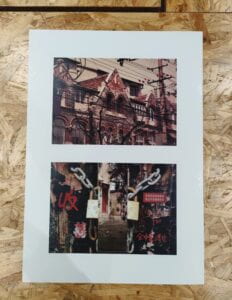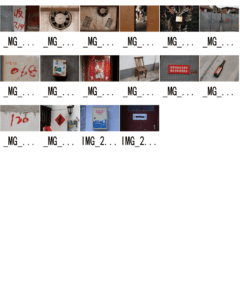The first obstruction was that 1)no single edit may be longer than 12 frames 2)all the questions had to be answered 3)the film needed to be shot in Cuba 4) no set. Hence, Jorgen invited a real hombre cubano and a local woman to shoot the film. Affected by the frame restriction, there were many repetitive parts and some parts were stuck and stopped and then moved on to the next frame. The overall effect was that it made the film more artistic and even a little bit humorous due to the incoherence. Since there was no set and it was shot in Cuba, the scene was more natural. For answering the questions, it may hinder the audiences from thinking freely. But I think this kind of obstruction on frame edit can be used in contemporary art design nowadays.
The second obstruction was that 1)Jorgen would be sent to a miserable place 2)Go close to a few really harrowing things like dramas from real life that Jorgen usually refrained from filming, but don’t show it 3)Jorgen would act as the perfect human 4) The woman character was no longer necessary but the meal was still required. Thus, Jorgen chose a red light district in Mumbay but only partially hided the miserable place and people behind a transparent screen. The overall effect was that the screen was like a boundary that divided between the modern world and the old world so it was ironic and hillarious. But after all Jorgen was not a professional actor so I was drawn out of play at some certain points.
The third obstruction was that Jorgen should either go back to Bombay to shoot again while following the rules or remake the original film in the way he wanted. Then Jorgen started to shoot the film in Brussels. I found two big changes he made: one is that he used parallel editing which added more interactions and conversations between the two screens. He also isolated places and objects that he wanted to examine precisely. For example, when the man took out his money and the woman stood up, it might indicate something related to sex. The other change was that he used way more moving scenes and arrangements than the original one, which added more dynamics and energies to the film. From my point of view, it was a successful revision.
The fourth obstruction was that the work had to be a cartoon and Jorgen was not allowed to use clever artistic devices. With the help of a specialist in rotoscoping called Bob Sabiston, the cartoon film was shot. Since there were many filters and effects add on the original scene, it looks more imaginary. For me, it’s more of an animation in the game but I think Jorgen achieved the goals in some way.
The last obstruction was that Jorgen would be credited as the director but he would do nothing except for reading a narration script from Lars von Trier. The film was about the reflection of the shooting process and the task setting so I can feel some sincere conversations between Lars and Jorgen, especially because the words were written by Lars but then spoken by Jorgen, which is innovative. I like the phrase “You only saw what you wanted to see” and I think we need to view artworks from different perspectives to have a better understanding.

